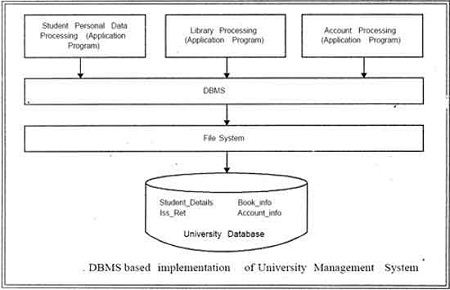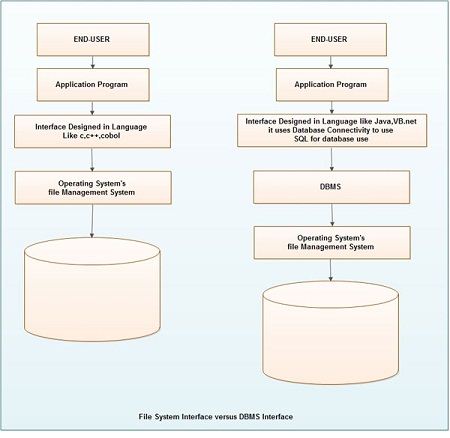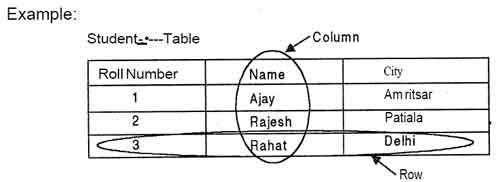In order to remove all limitations of the File Based Approach, a new approach was required that must be more effective known as Database approach.
The Database is a shared collection of logically related data, designed to meet the information needs of an organization. A database is a computer based record keeping system whose over all purpose is to record and maintains information. The database is a single, large repository of data, which can be used simultaneously by many departments and users. Instead of disconnected files with redundant data, all data items are integrated with a minimum amount of duplication.
The database is no longer owned by one department but is a shared corporate resource. The database holds not only the organization’s operational data but also a description of this data. For this reason, a database is also defined as a self-describing collection of integrated records. The description of the data is known as the Data Dictionary or Meta Data (the ‘data about data’). It is the self-describing nature of a database that provides program-data independence.

A database implies separation of physical storage from use of the data by an application program to achieve program/data independence. Using a database system, the user or programmer or application specialist need not know the details of how the data are stored and such details are “transparent to the user”. Changes (or updating) can be made to data without affecting other components of the system. These changes include, for example, change of data format or file structure or relocation from one device to another.
In the DBMS approach, application program written in some programming language like Java, Visual Basic.Net, and Developer 2000 etc. uses database connectivity to access the database stored in the disk with the help of operating system’s file management system.
The file system interface and DBMS interface for the university management system is shown.
We’ll be covering the following topics in this tutorial:
 Building blocks of a Database
Building blocks of a Database
The following three components form the building blocks of a database. They store the data that we want to save in our database.
Columns. Columns are similar to fields, that is, individual items of data that we wish to store. A Student’ Roll Number, Name, Address etc. are all examples of columns. They are also similar to the columns found in spreadsheets (the A, B, C etc. along the top).
Rows. Rows are similar to records as they contain data of multiple columns (like the 1, 2, 3 etc. in a spreadsheet). A row can be made up of as many or as few columns as you want. This makes reading data much more efficient – you fetch what you want.
Tables. A table is a logical group of columns. For example, you may have a table that stores details of customers’ names and addresses. Another table would be used to store details of parts and yet another would be used .for supplier’s names and addresses.
It is the tables that make up the entire database and it is important that we do not duplicate data at all.
 Characteristics of database
Characteristics of database
The data in a database should have the following features:
Organized/Related. It should be well organized and related.
Shared. Data in a database are shared among different users and applications.
Permanent or Persistence. Data in a database exist permanently in the sense the data can live beyond the scope of the process that created it.
Validity/integrity/Correctness. Data should be correct with respect to the real world entity that they represent.
Security. Data should be protected from unauthorized access.
Consistency. Whenever more than one data element in a database represents related real world values, the values should be consistent with respect to the relationship.
Non-redundancy: No two data items in a database should represent the same real world entity.
Independence. Data at different levels should be independent of each other so that the changes in one level should not affect the other levels.
Easily Accessible. It should be available when and where it is needed i.e. it should be easily accessible.
Recoverable. It should be recoverable in case of damage.
Flexible to change. It should be flexible to change.
To create, manage and manipulate data in databases, a management system known as database management system was developed.
 Dinesh Thakur holds an B.C.A, MCDBA, MCSD certifications. Dinesh authors the hugely popular
Dinesh Thakur holds an B.C.A, MCDBA, MCSD certifications. Dinesh authors the hugely popular